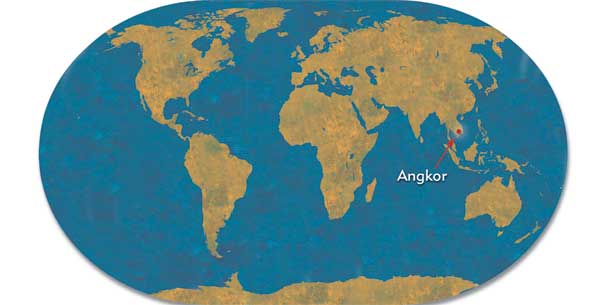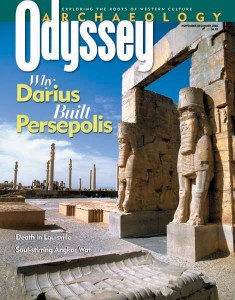Horizons: Angkor Wat: The Universe in Miniature
The temple’s five great towers represent the mountainous Olympian abode of the Hindu gods.

According to an ancient bilingual stela (inscribed in Sanskrit and in the Cambodian Khmer language), a man named Jayavarman II (802–835 A.D.) united a number of independent Southeast Asian kingdoms into the powerful Khmer Kingdom. Ruling from northwestern Cambodia, the Khmer kings amassed an empire that lasted 500 years and stretched from Thailand to Vietnam, from Laos to the South China Sea.
Curiously, the greatest creation of this mighty kingdom was a temple, Angkor Wat, which symbolized the Khmer’s universal ambitions, profound Hindu spirituality and keen awareness of the cycle of life and death.

The 17th Khmer king, Suryavarman II (c. 1113–1150 A.D.), built Angkor Wat as a temple to the Hindu god Vishnu, as a royal capital and, perhaps, as a mausoleum. According to tradition, Suryavarman was cremated upon his death and his ashes were placed in the temple’s central chamber, near a statue (not extant) of the preserver-god Vishnu. Possibly, then, the king considered himself one of Vishnu’s avatars (heroes born in the god’s image), like the Hindu heroes Krishna and Rama.
Already a library member? Log in here.
Institution user? Log in with your IP address.

